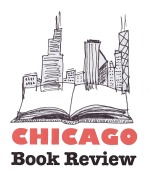With a printed bibliography as diverse as David Bowie, Wittgenstein, Lil’ Wayne, and Snow White and the Seven Dwarfs, the reader presumes that a wild ride is in store in author Cecilia Corrigan’s debut collection. And Titanic provides just that. Grandiose, multifaceted, daring, and complex, Corrigan weaves a story in sync with its time, our time. A novel of sorts, Titanic is a work in and inherently of the twenty-first century.
Titanic is not an ordinary book; it is not an ordinary read. Rather, it is more like an experience, a performance piece. The story begins with comedic dialogue between talk-show host Corrigan and her sidekick Paul, then moves into a self-guided tour through the Guggenheim, poems, lists, descriptive prose, letters from historical figures, net code, iMessage chats, diagrams, jokes, and references of all sorts.
 The story centers mystically around Alan Turing, the so-called father of artificial intelligence. A love story of technology and media, it integrates formal philosophical ideas with popular culture and popular personalities. Essentially a hypertext that attempts to transcend the reading experience, Titanic playfully mimics the experience of modern life—the profound, chaotic, incomprehensible pain and delight of a multileveled existence. Interconnected now through technology, every story, every character, every thought fits, bleeds, and blossoms together, one from the other. Corrigan, a graduate of the University of Pennsylvania and a former writer for the HBO drama Luck, provides the chorus to that experience through poetry and visionary prose.
The story centers mystically around Alan Turing, the so-called father of artificial intelligence. A love story of technology and media, it integrates formal philosophical ideas with popular culture and popular personalities. Essentially a hypertext that attempts to transcend the reading experience, Titanic playfully mimics the experience of modern life—the profound, chaotic, incomprehensible pain and delight of a multileveled existence. Interconnected now through technology, every story, every character, every thought fits, bleeds, and blossoms together, one from the other. Corrigan, a graduate of the University of Pennsylvania and a former writer for the HBO drama Luck, provides the chorus to that experience through poetry and visionary prose.
Most importantly, there is the poetry. An early poem plays a language game to engage the reader: “And by the time they sort it out we’ll be somewhere they’ll never catch us” (21). Another one, “The Poem Which Is Possibly a Collaborative Effort Depending on Your Sentence,” deliberately invokes participation. Explaining a map (or the idea of a map) of England, the poet writes, “It’s not the ‘real’ world of the main map, but it’s not some wild fantasy/(as of, the future).”
Then there is the love story, an endearing testament to the bond between the individual and the machine. Corrigan dances this into being with a unique hybrid style, a style that harkens back to Mina Loy and the outrageous but singular Elsa Von Freytag-Loringhoven.
Nothing about Titanic, however, harkens back to anything. As originally presumed, it is wild, engaging, mysterious, and bold, and succeeds on its own terms. “No map of this future is needed: and the meaning/Don’t forget” (49).
September 2014, &NOW Books
Poetry
$16.95, paperback, 216 pages
ISBN: 978-1-941423-99-8
—Reviewed by Nathan Prince
Titanic earned the Madeleine P. Plonsker Emerging Writer’s Residency Prize.
Learn more about the book.



Pingback: CBR’s Best Books of 2014 | Chicago Book Review